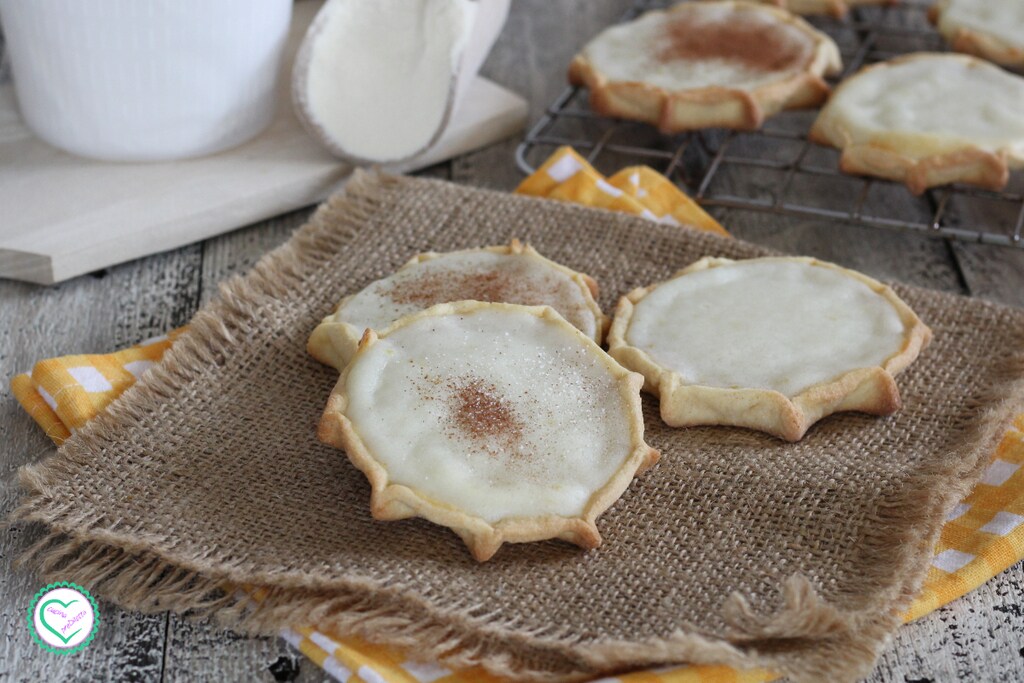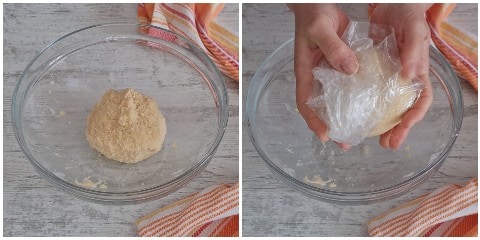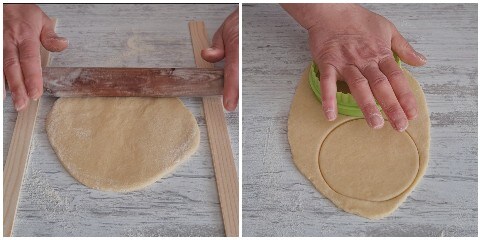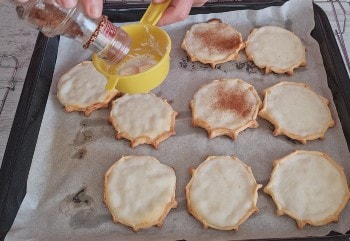Sicilian ricotta cassatelle, delicious sweets prepared for all celebrations: Carnival, Christmas, Easter. During the winter period, from autumn to spring, you can find them in all Sicilian bars, pastry shops, and bakeries. They can be served at the end of a meal and are fantastic with afternoon tea or even for breakfast. In the Catania area, they are mainly made with sheep ricotta, while in other areas of Sicily, cow ricotta is used. Being from Catania, I almost always prepare my ricotta desserts with sheep ricotta, but that doesn’t mean that cow ricotta isn’t good as well and can be used for sweet preparations.
Other recipes you might be interested in:

- Difficulty: Medium
- Cost: Cheap
- Preparation time: 40 Minutes
- Portions: 10 Pieces
- Cooking methods: Baking
- Cuisine: Italian Regional
- Region: Sicily
- Seasonality: Autumn, Winter, and Spring
Ingredients for Sicilian Ricotta Cassatelle
- 4 1/4 oz semolina flour (+ as needed for the work surface)
- 3 1/2 oz all-purpose flour
- 1 3/4 oz lard
- 1 3/4 oz sugar
- 1/4 cup water
- 1 egg
- 1 pinch salt
- 10 1/2 oz sheep ricotta (very dry, already drained)
- 3 1/4 oz sugar
- 1 lemon zest
- as needed ground cinnamon
Recommended Tools
- Food Mill
- Rolling Pin Guides
- Cookie Cutter
- Piping Bag
Preparation of SICILIAN RICOTTA CASSATELLE
Note well: to prepare the cassatelle you need very dry ricotta, so I recommend buying it 1-2 days in advance, placing it in a colander with a bowl underneath, and letting it drain well for at least 24 hours. Buy at least 500 g to ensure you get 300 g of “dry” ricotta.
Mix the semolina flour, all-purpose flour, and sugar in a bowl.
Add the lard, a pinch of salt, the egg, and 50 ml (no more) of water.

Knead until obtaining a homogeneous dough.
Form a ball, place it in a plastic food bag (or wrap it in a sheet of cling film) and put it in the fridge for at least 30 minutes.

Sift the ricotta (I use a food mill) into a bowl.
Add the grated lemon zest and sugar; mix well, cover the bowl and place it in the fridge while you work on creating the cassatelle shells.

Take the dough from the fridge, place it on a lightly floured surface (with semolina flour), cut it into pieces, and roll it out with a rolling pin to a thickness of about 1/8 inch. You can use rolling guides to help.
Cut the dough with a 4-inch diameter cookie cutter.

Form the shells by pinching the edges to create a height of 1/2 inch. You can make them taller if you wish. As they are ready, place them on a baking sheet covered with parchment paper and prick the bases with the tines of a fork.
Place the ricotta in a piping bag, then distribute it in the cassatelle shells.

Bake the cassatelle in a preheated oven at 375°F static or 340°F convection for 18-20 minutes (I used 340°F convection for 18 minutes)
Remove the sweets from the oven and let them cool slightly, then sprinkle some ground cinnamon on the surface of the ricotta.

You can serve Sicilian ricotta cassatelle warm or cold.
You can watch on YouTube the → video of SICILIAN RICOTTA CASSATELLE
Notes
Sicilian ricotta cassatelle can be stored at room temperature for 2 days.
You can add a few pinches of cinnamon to the ricotta as well.
You can add chocolate chips to the ricotta.
If you enjoyed this recipe, you might also be interested in the Spoon Desserts for Mother’s Day or the Filled Cakes to Serve with Tea.
FAQ (Questions and Answers)
The dough is hard and difficult to roll out, what can I do?
Add a little water (just a little) and knead it quickly. Be careful if it is too soft, the cassatelle will lose their shape during baking.
The dough is very soft and sticks to the rolling pin and the work surface, why?
Even if you follow the measurements, it can happen that the dough is too soft or too hard. In your case, you can add a bit of semolina flour (about 1 tablespoon). Work the dough quickly and then roll it out. Also remember to flour the work surface and the rolling pin with a bit of semolina flour.
The cassatelle opened during baking. What did I do wrong?
This can happen when the dough is too soft, or you haven’t “pinched” the edges well. For extra security, you can moisten the finger you use to work the inside of the edge.

